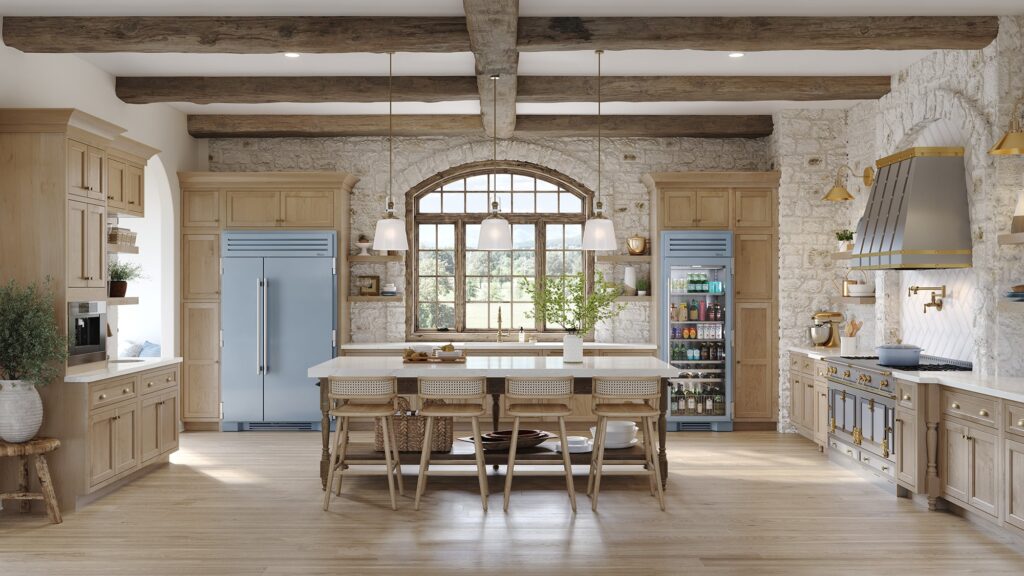Key Takeaways
- Larger kitchens that flow into adjacent spaces;
- Walk-in pantries and dedicated areas for small appliances to reduce clutter;
- Multiple ovens and dishwashers will become more commonplace;
- Integrated technology will add convenience and practicality.
By Robert Isler
NKBA’s 2023 Design Trends report provides insight into both emerging trends and those that will continue to gain momentum over the next two to three years. Combining the feedback of 600 K+B specialists, it’s no surprise that given the fact that the home has evolved into a place of rest, recreation, and work, the kitchen becomes even more prominent in terms of space, function and design.
Let it Flow/Keep it Tidy
Kitchens are opening up and expanding overall functionality with a focus on more efficient storage and concealed workspaces. Technology is becoming more firmly entrenched while styles shift to embrace an aesthetic of vibrancy, combining multiple design elements and materials along with bold accents, splashes of color and texture.
The trend is clearly towards a cleaner look as the room flows into other areas of the home as well as the outdoors. This includes removing walls that lead into adjacent rooms and incorporating large windows to create the appearance of a kitchen fusing with the outdoors (74 percent).
With more open space comes the need to mask clutter. The report indicates a high increase in the need for walk-in pantries (76 percent) followed by the built-in variety (66 percent) and butler’s pantries (62 percent) as well. Dedicated work areas for small appliances are also on the rise.
The trend towards clean, and efficient design extends to countertops, backsplashes and flooring as well. Sanitary counter surfaces that can be easily cleaned, such as quartz (60 percent), are on the rise. Slab backsplashes will increase (50 percent) for ease of cleaning and seamless design, with little to no grout. Easy-to-clean flooring will continue to be a must (70 percent) lead by hardwood (48 percent).
Multi-function & Multiples
Large, multi-function kitchen islands that can accommodate the growing demands of the kitchen will continue to be extremely popular. Designers are creating areas of the island to accommodate food prep, serving, entertaining and work/charging stations. Multiple ovens, either two large single ovens or the use of one large and one small, are gaining in popularity as well (64 percent). Venting hoods are becoming a kitchen focal point, with wood and stainless steel the most popular material choices. And even cooking itself is shifting, as induction cooking gains traction. French doors will continue to be the most popular refrigerator style (53 percent), well-above the 35 percent for bottom freezers.
Seamless Technology
Kitchen tech will continue to become more commonplace. From smart app-based technology that enables one to control lighting, room temperature and even activate appliances (51 percent) to new cooking technology. This includes tech that supports precision-cooking, motion-sensor faucets, alerts for open refrigerator doors, taps that increase water purity and the demand for steam and air frying technology to be integrated into ovens (73 percent).




























